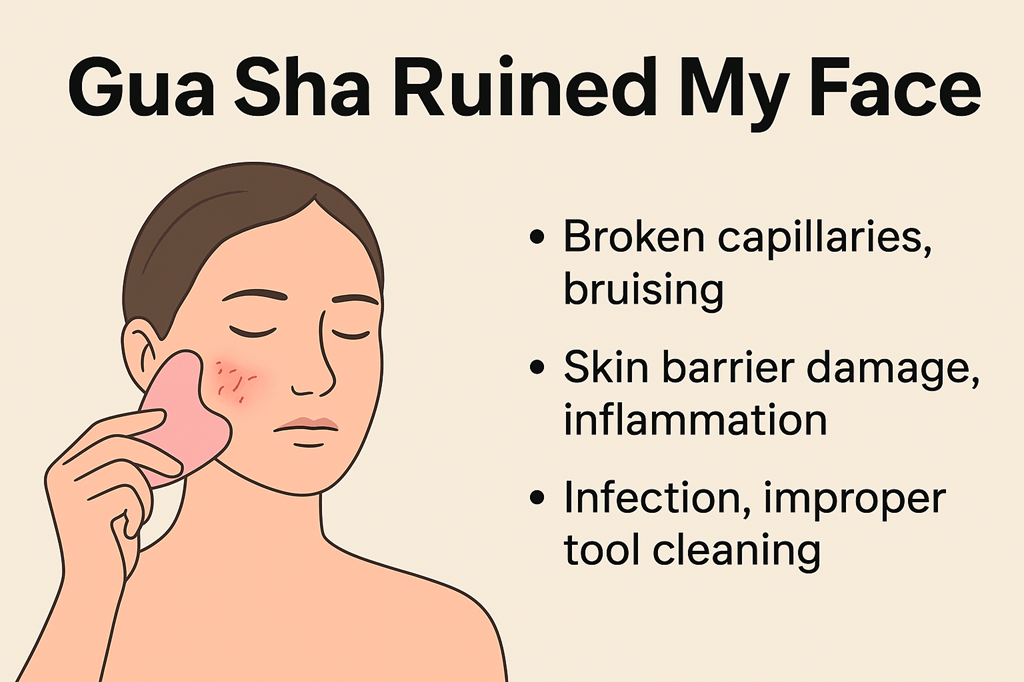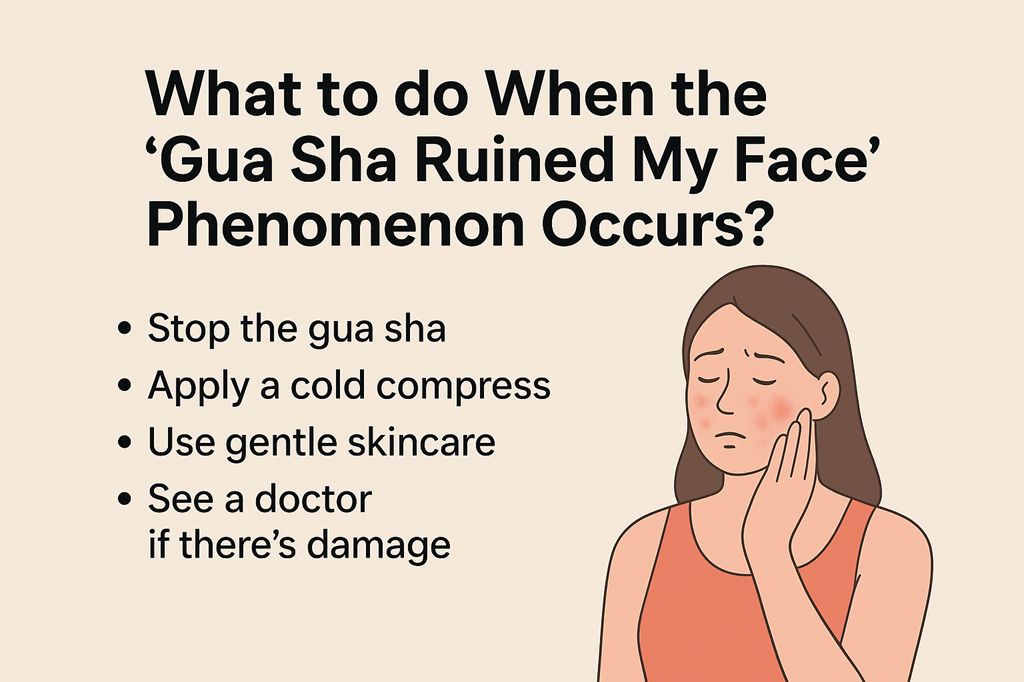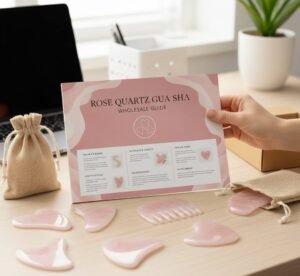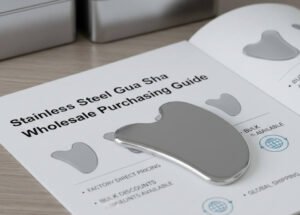
As Gua Sha becomes increasingly popular worldwide, more and more people are sharing their experiences, both visible and potential, with the practice. While these reports are largely positive, there are also some dissenting voices. Recently, a blogger posted a set of before-and-after photos of Gua Sha, commenting, “Two weeks later, my cheeks have permanent redness.” This has led many to wonder: Will Gua Sha ruined my face?
While Gua Sha is a relatively safe facial treatment, it is by no means risk-free. If used incorrectly, it can cause damage to the face, such as broken capillaries, pigmentation, or skin damage. It’s no surprise, then, that some people are posting comments like, “Gua Sha ruined my face.” Today, we’ll analyze this phenomenon in detail, identifying those most vulnerable, common misuses, and solutions to address any issues that arise.
What is Gua Sha?
We have already written a lot about what Gua Sha is, so we will not elaborate on it in detail. In short, Gua Sha is a method of gua sha the skin surface with a smooth, sheet-like object to stimulate blood circulation and excrete harmful substances, thereby achieving therapeutic or cosmetic effects. In recent years, facial Gua Sha has gradually surpassed traditional Gua Sha and become the most popular Gua Sha effect.
- Why Does the Phenomenon of "Gua Sha Ruined My Face" Occur?
- Who is At Higher Risk of Gua Sha?
- What to do When the "Gua Sha Ruined My Face" Phenomenon Occurs?
- How to Perform Facial Gua Sha Safely?
- Conclusion
Why Does the Phenomenon of “Gua Sha Ruined My Face” Occur?
Facial injuries from Gua Sha mostly occur due to incorrect use and the use of unsuitable individuals. While Gua Sha is relatively safe, it is not completely safe. The most common causes of facial injuries are ruptured capillaries and bruising. While these are common with body gua sha, they are undesirable for the face. According to Healthline, ruptured capillaries are primarily caused by excessive force, a steep angle, and excessive friction caused by a lack of lubricant. While these conditions are often temporary, frequent use can weaken capillaries and expose them to prolonged exposure. Certain individuals may experience more severe effects.
Secondly, damage to the facial skin barrier and inflammation are also common risks associated with Gua Sha. Excessive friction can damage the stratum corneum, impairing the normal function of the skin barrier, causing burning and stinging sensations, and even leading to pigmentation, which can affect appearance. Especially for those with sensitive skin, these injuries can lead to more severe consequences and more noticeable symptoms.
Finally, skin infection is also a significant factor. Skin infections are often caused by bacteria or viruses on the surface of uncleaned gua sha tools, which can then be transferred to the face through damaged areas of skin, leading to folliculitis, skin infection, and even more severe inflammatory reactions.
As can be seen from the above, the phenomenon of “gua sha ruined my face” is mostly due to incorrect usage and individual skin tolerance, rather than the inherent harmfulness of gua sha. In addition to incorrect usage, individual differences also play a significant role in the varying degrees of gua sha damage.
Who is At Higher Risk of Gua Sha?
Gua Sha isn’t suitable for everyone, as individual tolerance can vary greatly. According to Medical News Today, the following groups may be at increased risk when using it and should avoid it or consult a healthcare professional before using it:
- Those with coagulation disorders or those taking anticoagulants. These individuals may experience more severe reactions to the adverse symptoms of broken capillaries than those without the condition.
- Those with sensitive skin or rosacea. These individuals are more susceptible to skin reactions.
- Those recovering from facial surgery or wound healing. Using facial gua sha during these times may impair wound healing.
- Those with facial acne or open wounds. Using gua sha may cause secondary damage to the wound.
- Pregnant or breastfeeding women. Due to hormonal changes, the skin on the face is more sensitive than usual, increasing the risks of using facial gua sha.
The skin tolerance of the above-mentioned groups is relatively low, and the risk of using gua sha is much higher than that of the normal group. It is very easy to produce persistent redness and inflammatory reactions as mentioned at the beginning of the article. It is strongly recommended that such people do not use gua sha or use it with caution.
What to do When the “Gua Sha Ruined My Face” Phenomenon Occurs?

If you experience any of the above or other adverse reactions, discontinue use immediately to avoid more serious consequences. Then, apply a cold compress, such as an ice pack or ice cube, to the affected area to relieve the warmth and redness caused by subcutaneous bleeding. After 5-10 minutes, apply a mild, non-irritating, restorative moisturizer. If symptoms persist after these treatments, seek professional help immediately.
For significant telangiectasia and permanent redness, dermatologists recommend laser or intense pulsed light therapy. For pigmentation, whitening agents or other chemical treatments may be used. Additionally, in the early stages of adverse reactions, anti-inflammatory medications and restorative ointments can be tried to alleviate symptoms and promote skin barrier repair.
While some solutions exist, avoiding potential risks is the best option.
How to Perform Facial Gua Sha Safely?
If you want to enjoy facial gua sha without feeling like your face has been ruined, the safest approach is to avoid all potential risks:
- Check your condition to ensure you don’t fall into any of the high-risk categories mentioned above.
- Choose safe and reliable gua sha tools to avoid potential breakage or scratches.
- Thoroughly disinfect the gua sha tools to prevent bacteria or viruses from transferring to the skin through contact and causing damage.
- Maintain a gentle pressure during gua sha to avoid damaging the skin with excessive force.
- Maintain a 30-45° angle between the gua sha tool and the skin.
- Avoid excessive gua sha frequency; maintain a steady pace.
- Avoid excessive gua sha frequency on the same area; 10-15 repetitions are sufficient.
- Before gua sha, apply a lubricant tailored to your skin type. This reduces friction and promotes absorption of serums.
Conclusion
Remember, Gua Sha isn’t a completely safe treatment, nor is it a panacea. Before using it, you should conduct a self-assessment or consult a professional doctor to ensure you’re suitable for facial gua sha. Also, be sure to review relevant information and equip yourself with knowledge before use to further minimize risks.
Be fully prepared, and you’ll be less likely to experience the “gua sha ruined my face” experience.






